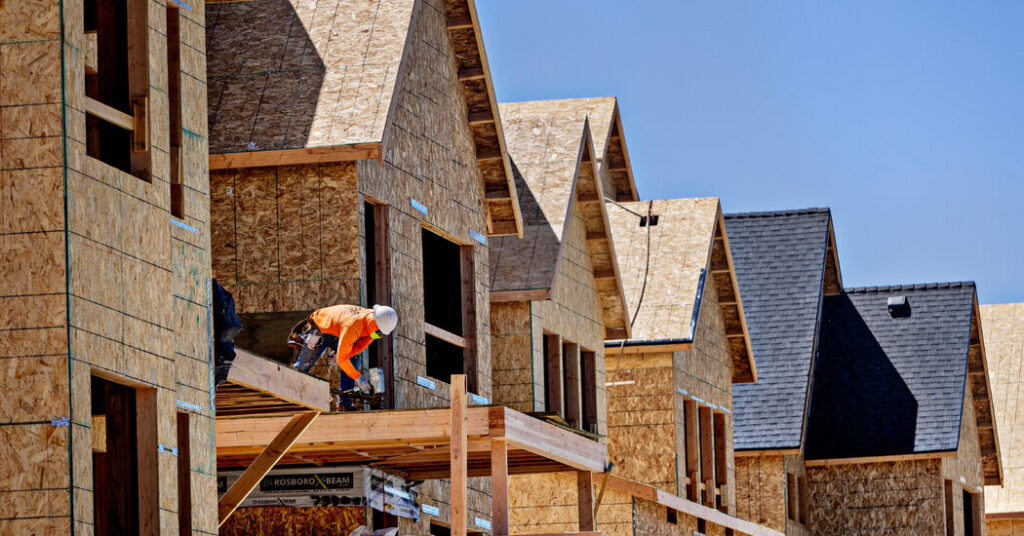Construction of new homes in the United States dropped below expectations in May as builders pull back on new residential projects largely in response to high interest rates, reinforcing concerns about stubbornly high housing prices.
Government data released on Thursday showed that new-home construction, or housing starts, fell 5.5 percent last month to an annualized rate of 1.28 million, a sign of more cracks in the already shaky housing market. Slower construction of both single-family and multifamily homes contributed to the overall drop. Building permits dipped 3.8 percent, pointing to less future construction.
This downturn in home building comes as the average rate on 30-year mortgages, the nation’s most popular home loan, has reached highs not seen in decades, though the rate dipped slightly this week to 6.87 percent, Freddie Mac reported on Thursday.
The magnitude of the decrease in construction last month underscores that high interest rates are both weakening housing demand and raising costs for builders — two dynamics that are ultimately contributing to builders’ reluctance to start projects. Home builder sentiment dropped in May to its lowest level this year before falling even further this month, suggesting relatively tepid home construction data in the coming months, Daniel Vielhaber, an economist at Nationwide, said in a statement.
The weakening in construction, in turn, is only putting more strain on prospective home buyers.
“If you’re a consumer, if you’re someone looking to buy a home, what you ultimately want is a lot more supply,” said Chen Zhao, who leads the housing economics team at the real estate services company Redfin. “The key to having more housing supply is that we need more building. So any time we see that there is less building, that is bad news.”
The latest housing construction data, released by the U.S. Census Bureau and the Department of Housing and Urban Development, reinforces that consumers are unlikely to see home prices drop by much over the next couple of years, Ms. Zhao said. The data point, she added, represents “one more factor that would keep home price growth high” because it points to a tighter housing supply in the next year or two.
Federal Reserve officials left interest rates unchanged at their meeting last week and predicted that they would cut borrowing costs just once before the end of 2024. Builders are probably reacting to uncertainty surrounding the Fed’s coming decisions on interest rates — and how lower rates might affect housing demand, Ms. Zhao said.
“What the Fed will do is looming large for a lot of different actors in the economy, including for builders,” said Julia Fonseca, an assistant professor of finance at the University of Illinois at Urbana-Champaign.
Mortgage rates stood at around 3 percent in June 2021, less than half the current level. They began climbing in 2022, when the Fed started raising its benchmark rate in an effort to combat inflation.
First-time home buyers, in particular, are being “squeezed from all sides” as they face high prices, high interest rates and low inventory, Ms. Fonseca said. Many homeowners with mortgage rates that are substantially lower than current rates feel locked in, limiting their mobility and restricting the amount of housing on the market.
Lower rates of construction are poised to contribute to these existing strains on housing inventory, potentially adding to the price burdens facing consumers.
“If new construction is not happening, that could drive prices up even further,” Ms. Fonseca said.


